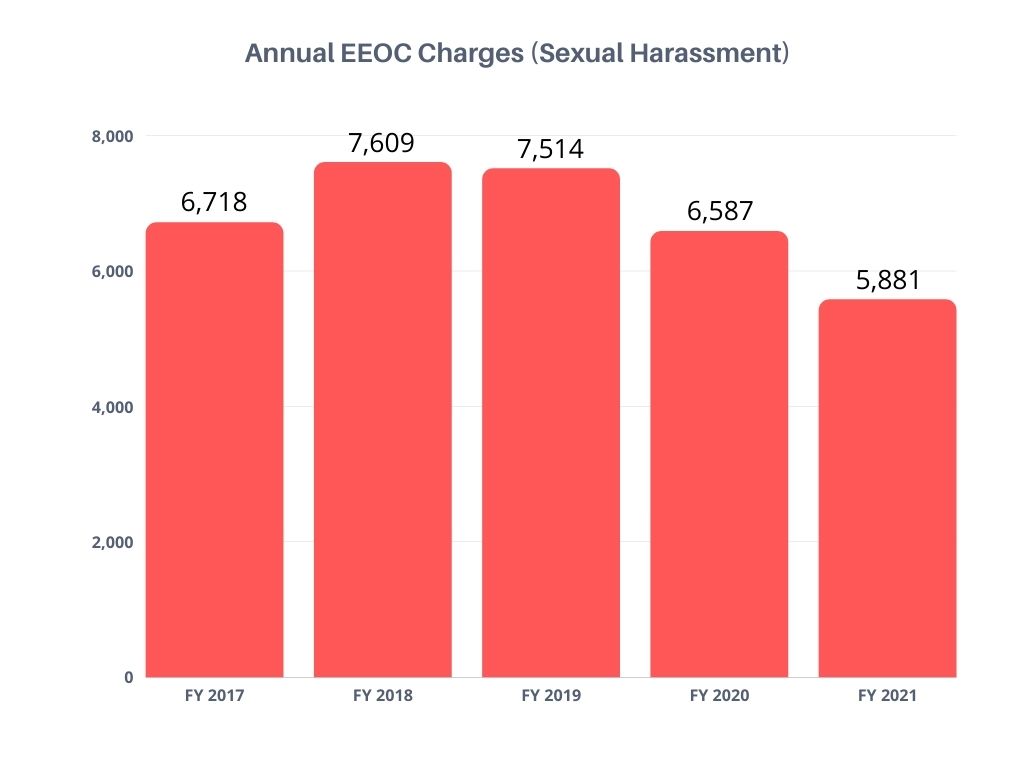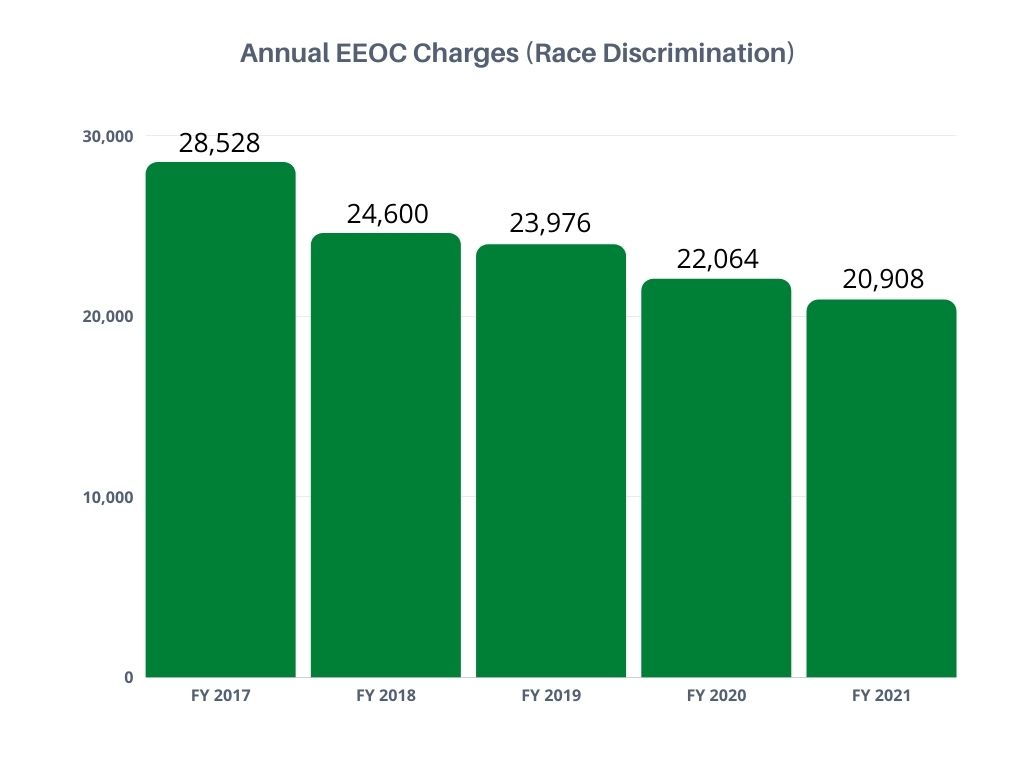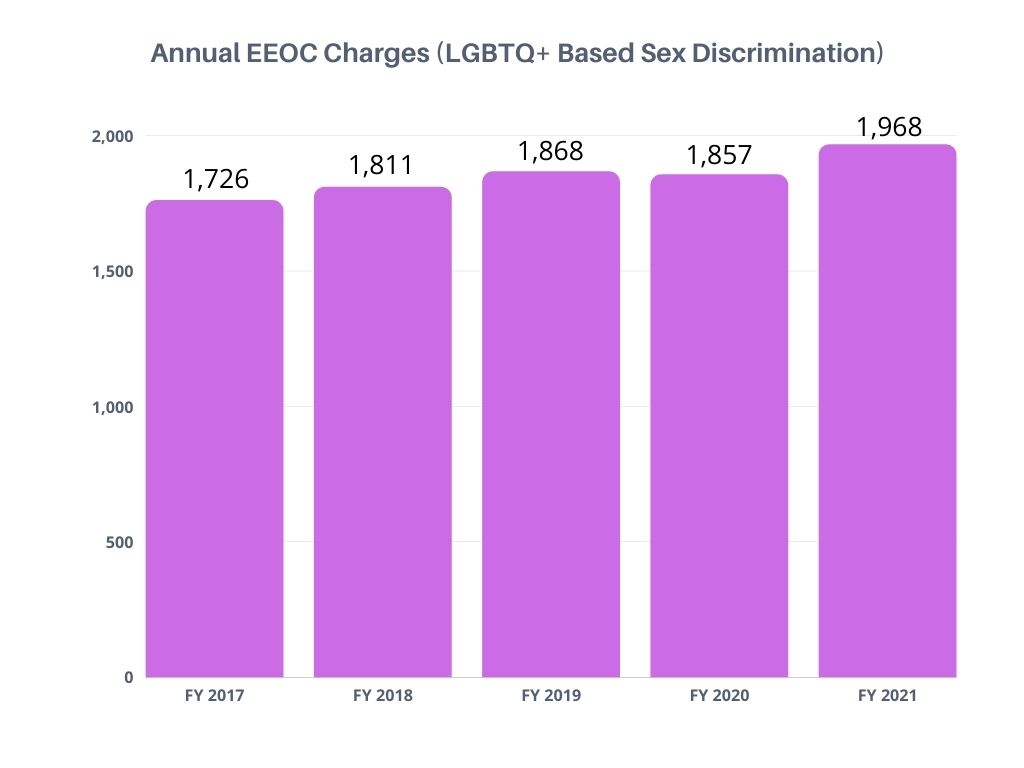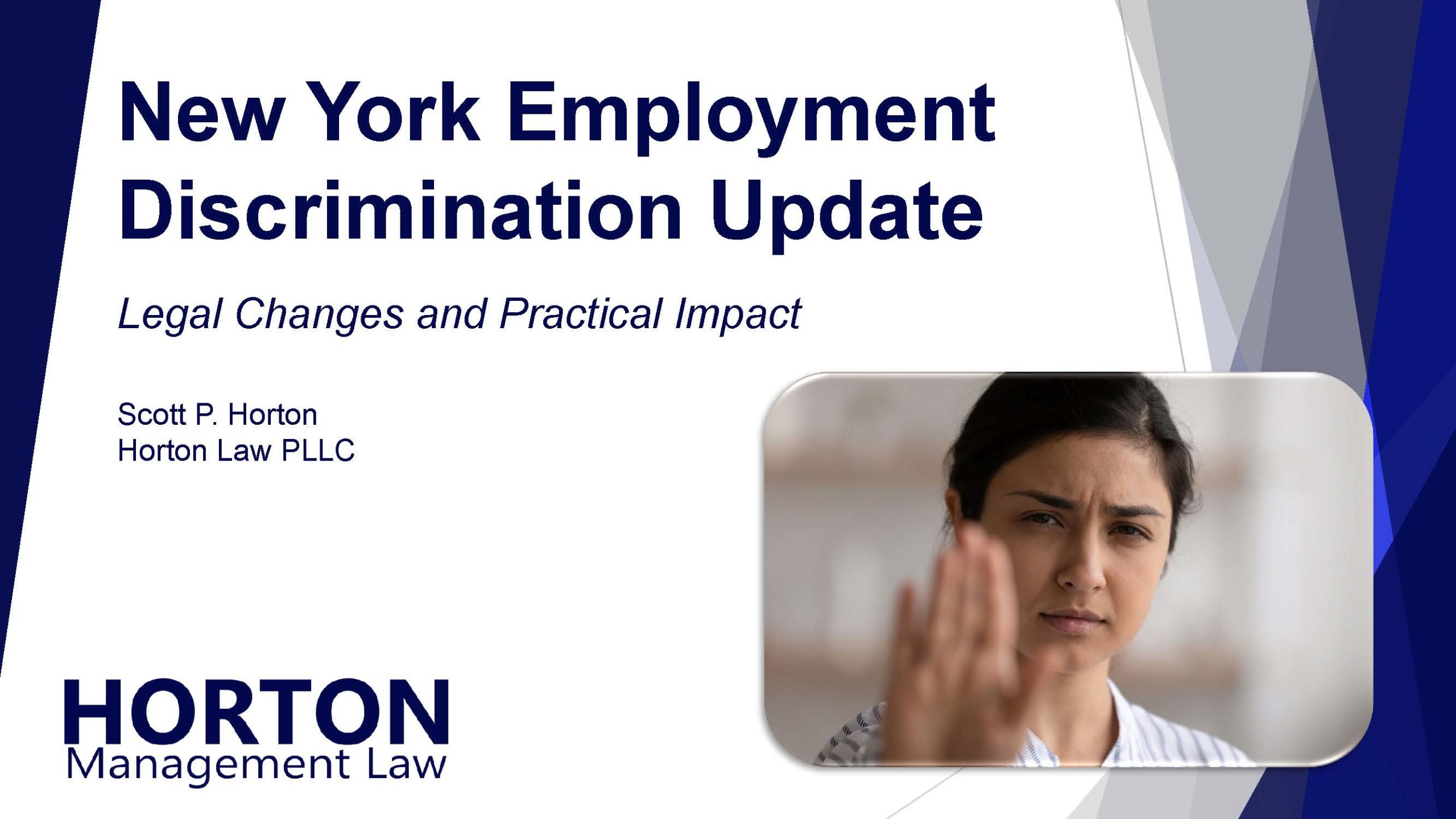The number of employment discrimination claims filed with the U.S. Equal Employment Opportunity Commission continued a steep decline in 2021. At the lowest level in at least several decades, data from the past two years suggests that COVID-19 contributed to the reduction. But a review of 2021 EEOC charges reveals some interesting trends that may be unrelated to the pandemic.
FY 2021 EEOC Charges
The latest annual data refer to the 12-month fiscal year ending September 30, 2021. The EEOC received 61,331 charges of employment discrimination during this period. The charges span several federal laws, including Title VII of the Civil Rights Act of 1964, the Age Discrimination in Employment Act (ADEA), the Americans with Disabilities Act (ADA), the Equal Pay Act, and the Genetic Information Non-Discrimination Act (GINA).
More than half (56%) of the charges included a retaliation claim, often in addition to claims based on other protected characteristics.
Here is the percentage of total charges that asserted discrimination based on those other characteristics:
- Disability – 37.2%
- Race – 34.1%
- Sex – 30.6%
- Age – 21.1%
- National Origin – 10.1%
- Color – 5.7%
- Religion – 3.4%
- Equal Pay – 1.4%
- Genetic Information – 0.4%
Totals exceed 100%, as charges can allege more than one category.
Harassment charges, which can be based on any protected characteristic, also continued to fall in FY 2021, even as a percentage of all claims. Of the total EEOC charges filed last year, 21,270 (34.7%) included a harassment claim. In 2020, 35.9% of charges included a harassment allegation.
Downward Trend
Since Democratic administrations are seen to be more employee-friendly than Republican ones, it is interesting to review these data in line with the party in control of the White House (and, correspondingly, the EEOC). Annual EEOC charges began to decline following the transition from the presidency of Barack Obama into the Trump Administration. After consistently measuring near or above 90,000 cases per year under President Obama, total EEOC charges have declined each year since Donald Trump was elected. Of course, this now includes the beginning of Democrat Joe Biden’s presidency.
Sexual Harassment Charges in 2021
Claims of sex-based harassment fell to 10,035, down 13.1% from the FY 2018 peak sparked by the #MeToo movement. That number includes all charges alleging harassment related to one’s sex (treating people of one sex less favorably than others). The EEOC separately tracks harassment of a sexual nature.
Charges alleging harassment of a sexual nature also fell to the lowest level in the 25 years of data reported by the EEOC. The agency received 5,581 such charges in FY 2021, down 26.6% from 2018, and 29.7% from 2010.
What’s Going On?
While there are many possible explanations for the decline in charges, it is hard to ignore the potential impact of the COVID-19 pandemic over the past two years. With less workers on-site, there may simply be fewer opportunities for employees to feel harassed. A relative labor shortage could also be a factor. If employees who think they have been terminated from their jobs for a discriminatory reason quickly find new employment, they may be less likely to file a claim against their former employer. Enhanced unemployment benefits may have also generated a similar effect.
Of course, it would be great if the decline in charges corresponds to a reduction in actual instances of harassment or other discrimination. However, the data do not readily enable an analysis of whether that may be the case.
Digging Into the 2021 EEOC Charge Statistics
What may we be able to find out from the data on 2021 EEOC charges?
All statistics used for this article are available here.
Race/Color Discrimination
The EEOC reports 20,908 charges alleging race discrimination in FY 2021. That’s easily the fewest such claims in the history of the EEOC dataset going back to 1992, representing a 41.7% drop since the peak a decade earlier in FY 2010.
However, charges based on color discrimination have been increasing. In FY 2020, 5.7% of charges (3,516) included a claim of color discrimination–the highest level ever for such claims on a percentage basis. The reasonable assumption is that more employees are raising color discrimination claims instead of race discrimination. Yet, employees can claim discrimination based on both race and color. So, the increase in color discrimination claims doesn’t necessarily explain the reduction in race discrimination claims.
LGBTQ+ Discrimination
EEOC charges based on sexual orientation or transgender status have also increased in the past five years. This trend may not be surprising in light of a shift in judicial acceptance that these characteristics are protected under federal employment discrimination laws. The U.S. Supreme Court only held that Title VII prohibits discrimination based on sexual orientation and transgender status in June 2020.
Other Categories
Charges alleging discrimination based on sex, religion, age, and disability all declined in FY 2021 (as in 2017-2020). But the declines were roughly proportionate to the overall case volume.
Looking Ahead
The (hopeful) end of COVID-19 restrictions could affect EEOC filings next year. Likewise, Democrats will take complete policy-making control over the EEOC after the term of the next Republican on the commission expires in July 2022. This shift could lead to more aggressive enforcement of the federal employment discrimination statutes.
However, there is some room for optimism that whether due to COVID-19’s permanent impact on the workplace or other causes, harassment and discrimination are becoming less prevalent. Nonetheless, an overall trend is no solace if your company suffers the consequences of employment discrimination claims. As ever, employers should be proactive in preventing discrimination. Anti-harassment training is one viable approach. Effective hiring practices, training, and supervision are also critical.
To receive updates on employment law insights and developments, sign up for our email newsletter and follow Horton Law on LinkedIn.







You must be logged in to post a comment.